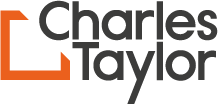How do mature markets compare to emerging markets on their transformation journeys?
In conversation with Insurance Business, Jeremy Stevens, head of EMEA business at Charles Taylor InsureTech, shared insights into what’s shaping insurance businesses’ strategic ambitions to modernise and transform their legacy infrastructures. At a high level, there are some common themes, he said, and one of those is around climate change and natural catastrophes.
The frequency and severity of extreme weather perils has continued to increase, resulting in substantial claims, which is leading to the re-assessment of risk and pricing models, which is a global issue. Take, for example, flooding, he said, which has been a peril impacting agriculture in emerging markets for years and it’s now an area of increasing concern in the UK and Western Europe. “Then there’s the constant inflationary and other economic factors at play in both markets.
“There are rising costs across property, vehicle and construction insurance and reinsurance. In emerging markets, it’s predominantly underpinned by less stable governments… Both these economic factors impact insurance organisations across both market types. Then you have digital transformation and adoption which I see as being more about how you embrace digital to enhance efficiency and customer experience.”
Technology and regulation – what’s happening?
In more mature markets, he said, the underwriting and claims functions of insurance companies are utilising AI, AI agents and RPA in a bid to personalise customer journeys and automate certain tasks. Meanwhile, in emerging markets, because these markets tend to be heavily depending on feature phone distribution, they’ve already made the leap to highly customer-centric business models.
Another common theme reshaping transformation programmes is around ESG regulatory requirements. “There's more robust governance and practices and ethical business standards now and we’re all much more mindful in the mature markets of the governance ‘steel works’ that need to be in place when we operate,” he said. “That is still fairly immature in some of the emerging markets, but they're coming up to speed.”
What’s holding back transformation programmes?
Stevens noted that everyone is constrained by legacy IT systems. The main difference between mature and emerging markets is that decisions in the mature market were made 10 to 15 years ago, he said, and so, they're often impacted by limited time and resources, resulting in potential business disruption.
“In the less mature targets, it's almost a blank canvas. Because they do have systems but they are older systems, which are less intricate,” he said. “So, sometimes they'll have some in-house systems that they've built, and they're able and more willing to spend more time on transformation pieces.” In the mature market, there are two clear routes, he said - either you can do a legacy overhaul or you can take a more problem-based approach.
Two options for transformation programmes
The legacy overhaul is where you update the core system, effectively freezing the business. This can take between three and five years, and can be quite costly. In addition, he said, anything you've built around your existing core – any apps or additional functions – would need to be developed and bolted on again in order to keep those capabilities.
The second option is the modernisation approach, where companies gradually migrate away from legacy systems. This option is slightly more tactical, he said, as it involves analysing what is required to complement the existing solutions and allows the business to continue to run, as the programme only involves working on certain disparate projects at a time. “So you have a middle layer of technology which brings together all satellite systems,” he said.
The mature market seems to be moving towards that modernisation play, he said, because companies don’t want to be impacted by the level of disruption caused by switching out core systems and so, they’re engaging with that middle layer. “What we’ve found is that some insurers don't tend to have a middle layer. They tend to have the core system, and then they've, over time, just bolted on systems around it.” In those cases, it’s necessary to build in a middle layer which allows for the gradual migration away from both core, and bolt-on and other satellite systems.
“What you tend to find is, with seasoned businesses, that the technology really is the DNA of the business,” he said. “So trying to reuse the tech stack that they've got, rather than replacing the whole stack tends to make more sense. But you definitely do see that those decisions made by some of the more mature businesses 10 to 15 years ago now have security concerns around the information coming in and out of the business.
“You might have 100 satellite systems attached together to a core. So, the modernisation approach, where you analyse which of those systems are critical and require development first is where larger organisations tend to start working now.”


